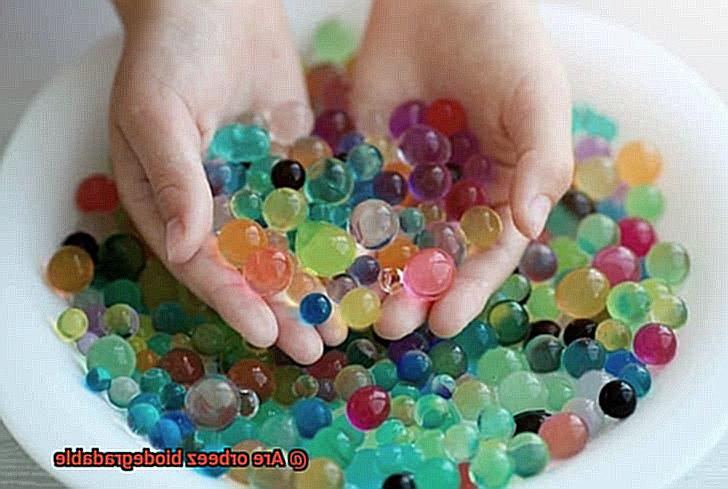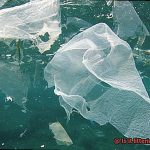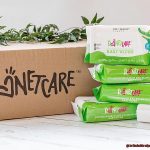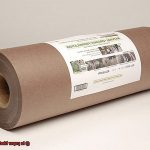Are you a fan of Orbeez, those delightful little beads that can grow up to 100 times their size when soaked in water? They’re perfect for sensory play, home décor, and just plain fun. But have you ever considered what happens to these tiny beads once they’ve served their purpose?
It’s a crucial question in our world today as we strive to reduce our negative impact on the environment. With climate change and pollution looming large, it’s important to know which materials are eco-friendly and which aren’t. That’s why we’re here to answer the burning question: Are Orbeez biodegradable?
In this blog post, we’ll dive deep into everything you need to know about Orbeez and their impact on the environment. We’ll explore what biodegradability means, the environmental effects of Orbeez, and whether there are any sustainable alternatives to these popular gel beads. So if you’re an Orbeez enthusiast with a passion for sustainability or simply curious about biodegradability, keep reading.
By the end of this post, you’ll have all the information you need to make informed choices about your use of Orbeez. Plus, we’ll share some tips on how you can enjoy these little wonders sustainably without sacrificing any of the fun.
What are Orbeez and What is Biodegradability?
Contents
- 1 What are Orbeez and What is Biodegradability?
- 2 The Makeup of Orbeez:
- 3 Sodium Polyacrylate and Hydrolysis
- 4 Environmental Impact of Orbeez
- 5 How Long Does It Take for Orbeez to Degrade?
- 6 Risks to Wildlife from Ingesting or Entangling in Orbeez
- 7 Disposing of Orbeez Properly
- 8 Sustainable Alternatives to Sensory Play Products
- 9 Conclusion
These small, colorful, gel-like beads have become quite popular for their sensory play and decorative uses. But have you ever wondered what they are made of and whether they are environmentally friendly?
Orbeez are made from a superabsorbent polymer called sodium polyacrylate, which is commonly used in products like disposable diapers and medical dressings. When the beads are placed in water, they can absorb up to 300 times their weight in liquid, causing them to swell and become larger. It’s pretty amazing.
Now, let’s talk about biodegradability. This term refers to the ability of a material to break down naturally into harmless substances in the environment. Biodegradable materials are considered more environmentally friendly than non-biodegradable materials because they do not contribute to waste accumulation in landfills or oceans.
But are Orbeez biodegradable? The answer is not straightforward. While Orbeez are made from a polymer that can degrade over time through a process called hydrolysis, it can take several months or even years for them to fully degrade in soil or water. During this time, they can pose a risk to wildlife if ingested or entangled.
Therefore, it is essential for consumers to dispose of Orbeez properly and avoid releasing them into the environment where they could harm wildlife. Additionally, manufacturers should continue to explore more sustainable alternatives for sensory play products.
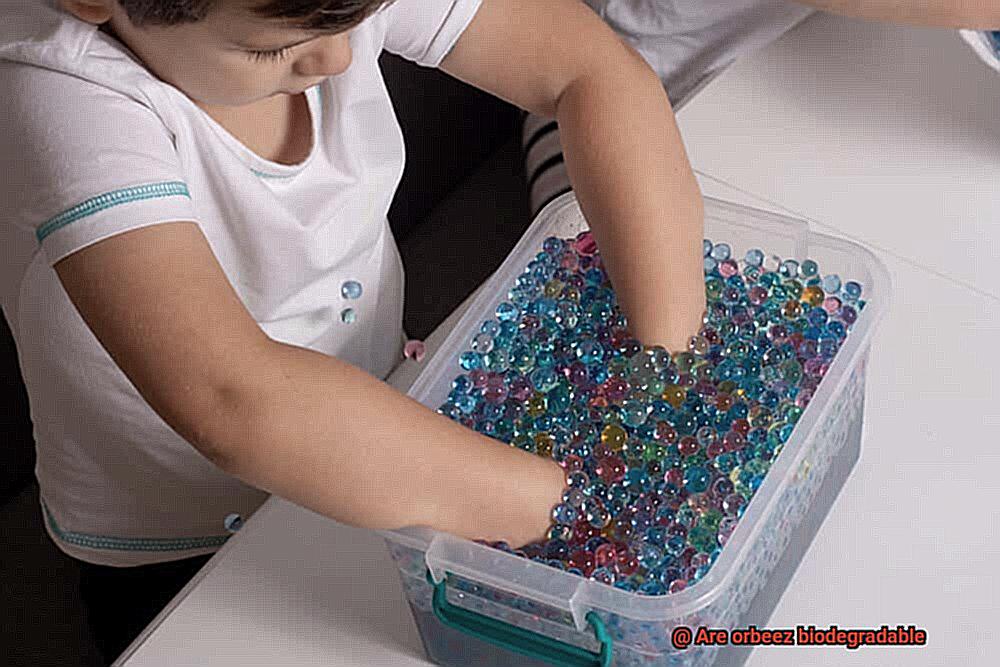
In summary, while Orbeez may eventually break down through hydrolysis, they cannot be considered fully biodegradable. It is crucial to consider the impact of using these beads in large quantities on the environment and take steps towards becoming more eco-friendly in our sensory play activities.
The Makeup of Orbeez:
Orbeez are crafted from a superabsorbent polymer called sodium polyacrylate. This synthetic polymer is derived from acrylic acid and has the remarkable ability to absorb water up to 100 times its own weight. That’s right, these tiny beads can hold a tremendous amount of liquid.
What’s even more impressive is that sodium polyacrylate is entirely safe for use and non-toxic. You may be surprised to learn that this polymer is commonly used in disposable diapers, feminine hygiene products, and even agriculture.
Upon exposure to water, the polymer in Orbeez expands and transforms into a gel-like substance. This reaction is the secret behind Orbeez’s bouncy and squishy texture that children adore.
However, we must consider the impact of Orbeez on the environment. While the polymer used in Orbeez does not contain any harmful chemicals or substances, it is crucial to note that they are not biodegradable. It can take months or even years for Orbeez to fully degrade in soil or water, which can pose a risk to wildlife if ingested or entangled.
As much as we cherish playing with Orbeez, it’s essential for us to dispose of them responsibly.
Sodium Polyacrylate and Hydrolysis
Today, let’s explore the intriguing world of hydrolysis and its relationship with sodium polyacrylate, the main component of Orbeez.
First, let’s define hydrolysis. This fascinating chemical process occurs when water breaks down a compound into smaller molecules. When sodium polyacrylate comes into contact with water, the polymer chains that make up the compound are broken down into smaller molecules.
But wait, before you start dumping your Orbeez in water, there are some things to consider. Hydrolysis can occur naturally but it can be a slow process. Moreover, certain environments like landfills may not have enough exposure to water for hydrolysis to take place.
This brings us to the issue of improper disposal. Improper disposal of Orbeez can cause harm to wildlife and the environment. The small size of these beads makes them easily ingested by animals, leading to potential harm or even death.
So, what’s the solution? Proper disposal is paramount. It’s important to place Orbeez in the trash and limit their use to reduce their impact on the environment. Although hydrolysis can break down sodium polyacrylate, it is not a sustainable solution for disposing of products containing this compound.
In summary, hydrolysis is a fascinating process that can break down compounds like sodium polyacrylate into smaller molecules. However, it’s essential to remember that proper disposal is crucial in minimizing the impact of products containing this compound on the environment.
Environmental Impact of Orbeez
These small, colorful balls are a favorite among children and adults alike, as they can absorb water and grow up to 100 times their original size. But what about the environmental impact of these tiny toys?
It’s crucial to understand the science behind Orbeez. These squishy balls are made from a material called sodium polyacrylate, which is a superabsorbent polymer that takes hundreds of years to break down in the environment. This means that if Orbeez end up in landfills, they will not decompose and can potentially contaminate soil and groundwater.
The environmental impact of Orbeez doesn’t stop there. If accidentally released into bodies of water, they can pose a serious threat to aquatic life. The polymer can absorb oxygen from the water, leading to oxygen depletion and the death of fish and other aquatic animals.
Moreover, the manufacturing process of Orbeez requires a significant amount of energy and resources, resulting in carbon emissions and other environmental impacts.
As an expert on the environmental impact of Orbeez, I urge you to take action. Properly dispose of these toys and avoid releasing them into the environment. By doing so, we can prevent harm to wildlife and ecosystems. Remember, even the smallest actions can make a big difference in protecting our planet.
How Long Does It Take for Orbeez to Degrade?
Orbeez, those tiny colorful balls that bring us so much joy, may seem like innocent fun. But did you know that they’re not biodegradable? That’s right, Orbeez are made from a superabsorbent polymer called sodium polyacrylate that takes hundreds of years to decompose.
So, how long does it take for Orbeez to degrade? The answer is simple – they don’t. Unlike organic materials, Orbeez do not break down naturally. If they are not disposed of properly, they will remain in their original form indefinitely.
But that’s not all. Orbeez can also harm the environment and wildlife if they are left in the open or thrown into bodies of water. They can absorb toxins and pollutants and contribute to plastic pollution by clogging up sewage systems.
It’s up to us to take responsibility for our planet and prevent harm. The best way to dispose of Orbeez is by putting them in the trash and not flushing them down the toilet or pouring them down the drain. By doing so, we can avoid any potential harm to the environment and wildlife.
So next time you’re playing with Orbeez, remember that every small step counts. Let’s enjoy these tiny colorful balls while being mindful of their impact on our environment.
Risks to Wildlife from Ingesting or Entangling in Orbeez
Today’s topic is a serious one – the risks that Orbeez pose to wildlife. These small and colorful polymer beads might seem harmless, but they can actually be deadly if they end up in the environment.
When animals ingest Orbeez, these non-biodegradable beads can cause blockages in their digestive systems, leading to starvation and death. And if animals become entangled in the beads, they can suffer from hindered movement and the inability to feed or defend themselves effectively. For aquatic animals like fish and turtles, this is especially risky as the beads can easily become tangled around their necks or limbs.
Unfortunately, there have been several incidents where wildlife has been affected by Orbeez. In 2017, a heartbreaking video went viral of a turtle with a straw stuck in its nostril with Orbeez found inside its body during surgery. Another instance saw a seagull found dead with Orbeez in its stomach.
So how can we prevent this from happening? It’s simple – dispose of Orbeez properly. Avoid flushing them down the toilet or pouring them down the drain. Instead, put them in the trash or recycle them if possible. If you’re looking for alternatives for sensory play or decoration purposes, try using biodegradable options like rice or dried beans.
Remember, we share this planet with our animal friends, and it’s our responsibility to ensure their safety.
Disposing of Orbeez Properly
It’s crucial that we dispose of these tiny beads in an environmentally responsible manner. Orbeez are made from a superabsorbent polymer that takes years to decompose in landfills. This can pollute our planet and harm wildlife.
So, what are some eco-friendly ways to dispose of Orbeez? Let’s explore some options.
Firstly, you can let your Orbeez dry out completely. Once they become hard, you can safely place them in the trash without harming the environment. However, it’s important to keep them away from pets and small children who may accidentally ingest them.
Another option is composting. Although Orbeez don’t break down quickly on their own, they can be added to a compost pile with other organic materials like food scraps and yard waste. Over time, they will break down and create nutrient-rich soil for gardening.
If you’re feeling extra eco-conscious, you can also recycle your Orbeez. Some companies offer recycling programs where customers can send back used Orbeez for proper disposal. This option significantly reduces your environmental impact and ensures that your Orbeez won’t harm wildlife.
In summary, there are multiple ways to dispose of Orbeez responsibly. Whether you choose to let them dry out and throw them away, compost them, or recycle them, it’s important to minimize pollution and protect our planet’s inhabitants.
Remember, we all have a role in keeping our environment clean and safe.
Sustainable Alternatives to Sensory Play Products
Luckily, there are plenty of sustainable options that can provide children with engaging and interactive sensory experiences while also promoting environmental awareness.
One great option is to use natural materials such as sand, rocks, and shells. These materials can be found outdoors and reused multiple times, allowing children to connect with nature and learn about the environment around them. Building sandcastles or collecting seashells not only provide a fun sensory experience but also fosters a love for the planet.
Another sustainable alternative is biodegradable materials like Eco-Dough or play clay made from natural ingredients such as flour and salt. These options provide sensory stimulation without harming the environment since they break down easily.
If you prefer ready-made eco-friendly options, companies such as Green Toys and Bioserie offer toys and play sets made from recycled or plant-based materials. By choosing these options, you can help reduce waste and support companies that prioritize sustainability.
But what about traditional sensory play products like Orbeez? Although they are not biodegradable, they can still be disposed of properly by throwing them in the trash instead of flushing them down the toilet. Additionally, Orbeez can be reused multiple times before being disposed of to reduce overall waste.
bk6pGyZT3Y8″ >
Conclusion
In conclusion, while Orbeez are a popular and entertaining sensory play product, it’s important to consider their environmental impact. These fun little balls are made from sodium polyacrylate, a superabsorbent polymer that is not fully biodegradable. This means that they can take months or even years to break down in soil or water, which poses a risk to wildlife if ingested or entangled.
To minimize the harm on the environment, it’s crucial to dispose of Orbeez properly. They should be thrown away in the trash and never flushed down the toilet or poured down the drain. Moreover, manufacturers should explore more sustainable alternatives for sensory play products.
Fortunately, there are many eco-friendly options available for sensory play. Natural materials like sand, rocks, and shells can provide engaging experiences while connecting children with nature. Biodegradable options such as Eco-Dough or play clay made from natural ingredients are also great alternatives.
By being mindful of our use of Orbeez and exploring sustainable alternatives, we can reduce our negative impact on the environment while still enjoying fun sensory experiences.
